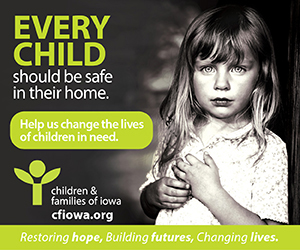Colleges beef up nursing programs

Ginny Wangerin’s face lights up with pride as she describes how her daughter is finding her first year as a nursing student at the University of Iowa to be a fulfilling experience. Yet she’s also seen how one of her daughter’s talented friends has changed career plans in frustration as she was unable to enter a crowded nursing program.
The latter situation all too familiar to Wangerin, director of nursing education for the past four years at Des Moines Area Community College, where she was also a nursing instructor for 24 years.
DMACC is among several colleges in Greater Des Moines that have ramped up their nursing certification programs in an effort to address an ongoing shortage of nurses that’s predicted to get worse before it gets better in Iowa. The real limitations, say administrators, lie in finding enough qualified instructors and sufficient training opportunities at the hospitals.
“Sadly, we have a lot of students who would like to be in the program right now, but the resources are not there,” Wangerin said. “Right now, our waiting list is between one and two years. Historically, at DMACC we have had a waiting list over the years. It ebbs and flows. However, we get uncomfortable when students have to wait for more than a year.”
Statewide, officials estimate that more than 500 applicants are waiting to get into nursing programs, though Wangerin says the reapplication process required by many colleges means the true number is likely double that.
About 2,400 students were admitted to undergraduate registered nurse programs in Iowa in the last academic year, an increase of 30 percent over the previous year. The 1,700 nursing graduates represented a 20 percent increase over the prior year. Despite those trends, however, Iowa will still be swimming against a national undertow of an unsurpassed demand for nurses.
MORE CLASSROOMS
A study released in early September by the Iowa Department of Public Health’s Center for Health Workforce Planning forecasts that the state’s shortage of registered nurses will increase from 8 percent in 2005 to 27 percent in 2020, or 9,100 unfilled nursing positions. That 2020 number, say health officials, is equivalent to nearly one-fourth the number of Iowa’s currently licensed practicing registered nurses.
In Greater Des Moines, several colleges that offer nursing programs have recently expanded or are in the process of adding to their facilities.
DMACC, whose nursing program’s enrollment has grown by 27 percent in the past five years, just opened the new Charles H. Betts Building on its Urban campus, which currently accommodates 55 nursing students who attend classes in the evenings.
On Friday, Mercy College of Health Sciences will break ground for a new 38,000-square-foot classroom and laboratory building, which Mercy officials say will already be near capacity when it opens, with more construction anticipated within five years. The college now operates the second-largest nursing training program in the state.
Grand View College, which expanded its facilities with the Charles S. Johnson Wellness Center a few years ago, now has about 450 nursing students. That represents 25 percent of the college’s total enrollment, which is also at an all-time high, said Judith Myers, interim division head for nursing at Grand View.
“Our enrollments have increased dramatically, not only in number of applicants accepted into the program, but also applications into the program, to the point where we have to look at how we can more effectively manage our enrollments,” she said. “We’ve begun to see some limitations in the availabiltiy of qualified nursing faculty, and limitation of places in the community for students to have their patient-care experiences.”
CREATIVE SOLUTIONS
Administrators at DMACC and Mercy College describe similar limitations for their programs, which has inspired some creativity on everyone’s part, said Brian Tingleff, vice president of institutional development for Mercy College.
For instance, to find additional clinical practice opportunities for its associate degree programs, Mercy College has reached agreements with Iowa Health System to arrange experiences at its rural hospitals, a setting in which about 30 percent of Mercy College’s plan to work, he said.
“And the exposure to Iowa Health System is wonderful for our students,” Tingleff said. “There’s a great number of learning opportunities there.”
Julie Ploessl, chief nurse executive for Iowa Health-Des Moines, says Iowa Health’s hospitals also work closely with both Grand View and DMACC to provide the clinical experience that nursing programs require.
“Clinical options used to traditionally only be on the day shift,” Ploessl said. “Now we’ve got students there on the evening and weekend shifts. It’s really increased the hours the students are on those clinical sites.”
Probably a bigger issue, she said, is the shortage of qualified faculty as the colleges struggle to fill positions that often pay less than experienced nurses can make at hospitals, clinics or in non-clinical positions with insurers.
“We are working with Grand View and DMACC to have one of our nurses be available as adjunct faculty (at the hospitals),” she said. “That’s a win for the schools that they have help and support, but also a win for us because it allows our nurses some additional experience.”
As another approach to address the faculty shortage, Mercy Medical Center has committed to assist 25 of its nurses to earn master’s degrees in nursing from the University of Iowa so that they will be equipped to return and teach at Mercy College, Tingleff said.
“We’re all looking at ways to collaboratively share the available experiences,” Grand View’s Myers said. “The clinical agencies are bringing us together, and we’re negotiating who’s going to be where and when.”
KEEPING NURSES IN IOWA
Currently, Iowa Health-Des Moines has a 3.4 percent vacancy rate for registered nurses, which Ploessl said is relatively low compared with national averages of 10 to 12 percent.
“We’ve worked very hard for the past few years by focusing on both recruitment and retention,” she said.
With an aging nursing workforce in the state, Iowa Health is bracing along with other health-care providers for an increasing pace of retirements that will create often hard-to-fill hospital staff vacancies. Currently, most of the attrition is from nurses leaving to take positions in which they can work regular daytime hours rather than shift work and weekends, she said.
To address that, “we’ve done a lot with scheduling practices,” she said. “For instance, we have weekend package positions; we’ve been able to draw some (nurses) to Des Moines that way (from surrounding communities). And using that, we’ve been able to give our nurses more weekends off. We also offer full benefits for part-time people, which has been very attractive.”
From the recruitment side, about 65 percent of Mercy College nursing students say they intend to work at Mercy Medical Center or within the Mercy system, Tingleff said. About 30 percent intend to serve rural communities in Iowa or the community at large.
“So there’s a pretty large percentage of our grads who stay in the area,” he said.
Overall, Iowa’s expected 27 percent shortfall of registered nurses in 2020 is still much less than the 36 percent national shortfall projected by then.
“We will not be in as bad a shape as the nation as a whole,” Wangerin said. “What will make the difference is how Iowa responds: if we continue to put out good programs and if we can be more competitive with neighboring states for better pay. If you’re known for the lowest pay, there’s a point where that begins to make a difference. Nurses in Iowa will put up with a lot before they leave, but younger people may be less inclined to stay.”







